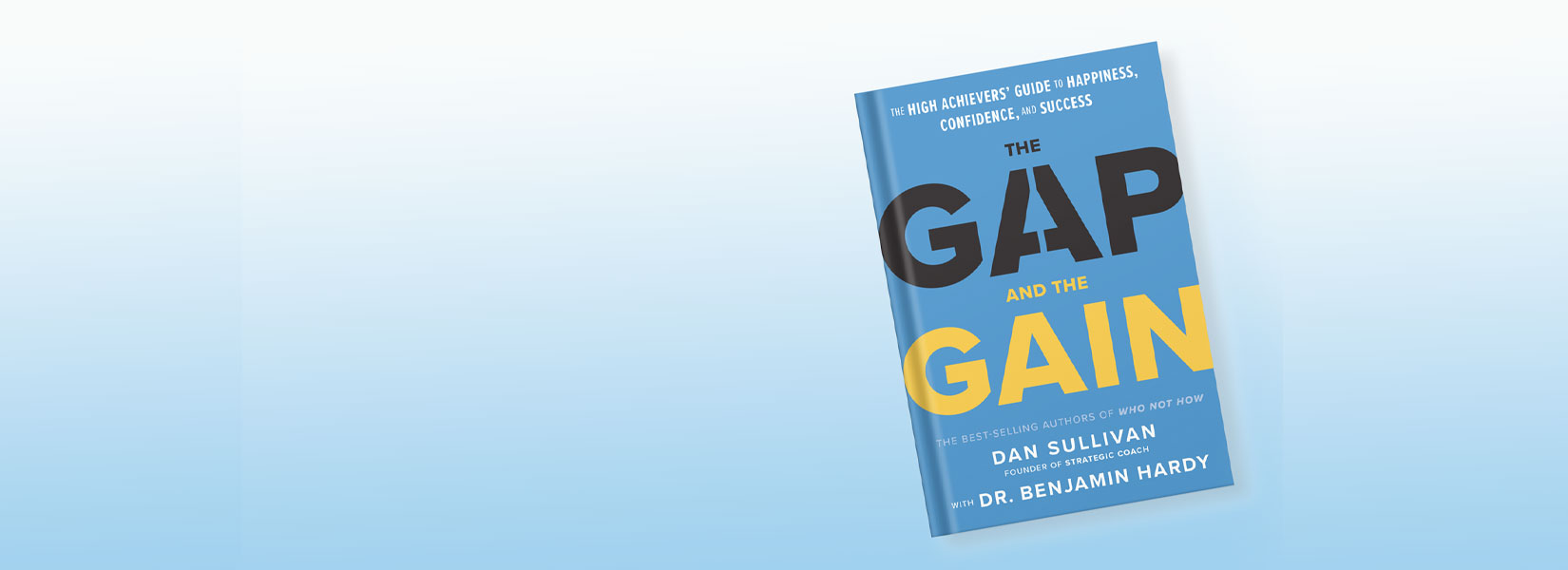Did you know you’re more successful than you let on?
Yes, you! If you are like me, annual reviews in your business life, whether giving or receiving, were painful. Now there is a better way! Enter the book The Gap and the Gain by Dan Sullivan and Dr. Benjamin Hardy. This is a book that sets about using the GAIN method to help people optimize their mindset in order to achieve their goals.
The core idea of the book is that progress is measurable only backwards from your current position, rather than forwards. When you measure backward, you look at the GAIN: what you have learned and how far you have come towards your goal.
If you measure forward into the future toward an ideal, you look at the GAP which is how far you are away from your ideal. Unfortunately, most business reviews are based on measuring the GAP. The result is often that we fail to recognize our progress.
Wants Versus Needs
The book starts by laying out the concept that we should be looking at our goals as WANTS versus NEEDS. By doing this we are motivated but not driven to the point of feeling a desperation to get to a goal. They use several good examples to illustrate this concept.
- A need creates an unhealthy attachment to the outcome which is seen as more driven by outside circumstances making them much harder for the individual to control.
- A want is something that we aspire to and places the individual more in harmony with the goal and inspired by it. By their very nature, wants are more intrinsically motivating.
The GAP and GAIN
In both cases of GAP and GAIN, we aspire to meet a goal whether it be a business or personal goal.
When we measure through the GAP, we look forward to this goal and see how far we still have to go to meet this goal. GAP measurement supports the need state. We set an ideal and we do not look at how far we have come towards that ideal – we only measure how far we are away from this ideal.
With GAIN thinking while we still have an ideal or goal, we measure our progress backward to see how far we have come in our progress towards the goal. GAIN measure supports a wanted state. We still know that we have not reached our ideal, but we can celebrate our growth towards the goal.
We do not need to be validated from the outside because we give ourselves the internal motivation which is so powerful.
Losing Team to Winning Team
The book covers much about how to go about being in the GAIN and how quickly we can fall back into GAP thinking when things do not go well. There are many examples throughout the book. One I wanted to share with you, is about a university soccer coach who had a team of novice women players.
In the start of the season, they lost their games…badly. Needless to say, the team was very depressed by this. To counteract this, the coach instituted a GAIN approach. After each lost game, the coach would set the timer for 5 minutes and allow the team to sulk and feel bad – in other words be in the GAP. Then the team took 10 minutes to talk about what happened that was good – be in the GAIN. Then, the team would take 20 minutes to talk about specific good things that another team member did. After that, the team would let the loss go.
While the team lost most of their games in the first half of their season, they started to win in the second half. By the end of the season, they were top in their league. A great example of how being in the GAIN helped to change the attitudes of players to focus on what was good, reinforcing the wins.
The book offers some basic starting points about measuring GAIN versus Gap:
- Your ideal should be inspiring and measurable – this is similar regardless of whether you are measuring forward or backward.
- Start by measuring how far you have already come – where you were 10, 5, 3 years ago even if it is just in general terms. This can be personal like knowledge base, financial, family relationships or it can be business such as learning, span of responsibility etc.
- Commit to a GAIN attitude towards measuring on a regular basis – start with monthly, then weekly and then daily. By measuring regularly and reviewing your progress you will see what you have learned even when you fail at something. This helps you make course corrections.
- Look at what you can GAIN from the experience even when something goes wrong.
- A great quote from the book is “move toward everything that is growing”
Lifeshiift Application
While this is technically a business book, there is much to learn about life from it. As we age, if all we see is that GAP between what we think of as an ideal rather than seeing how much we have gained, we will not have the happiness we deserve.
So many people see only losses as they get older, they do not measure their growth in areas like wisdom and love. By focusing on what we don’t have, we miss out on savouring all that we have. How can you practice being in the GAIN today?








Leave a Reply